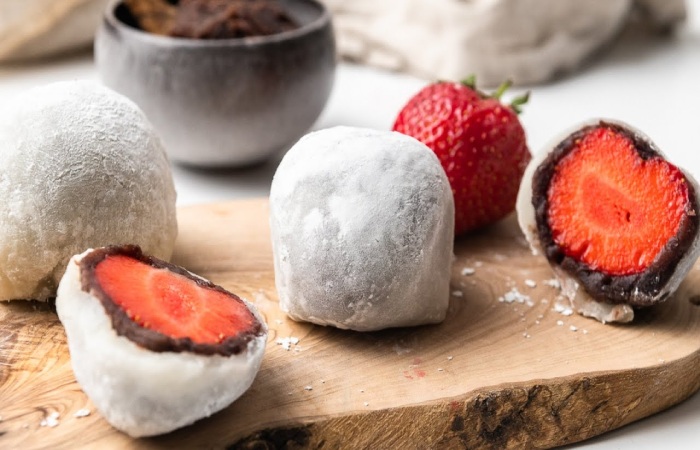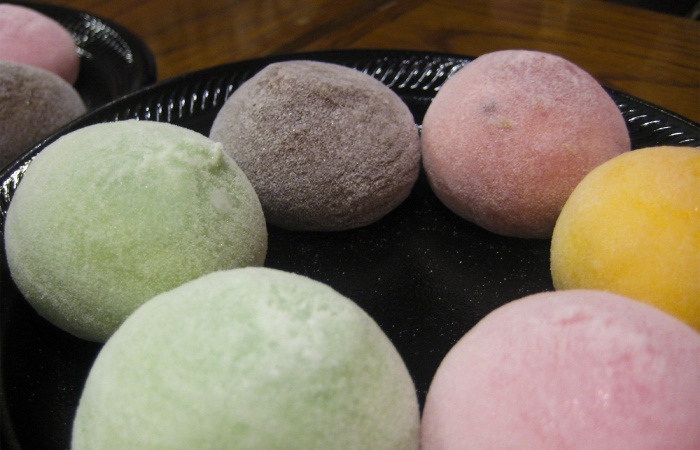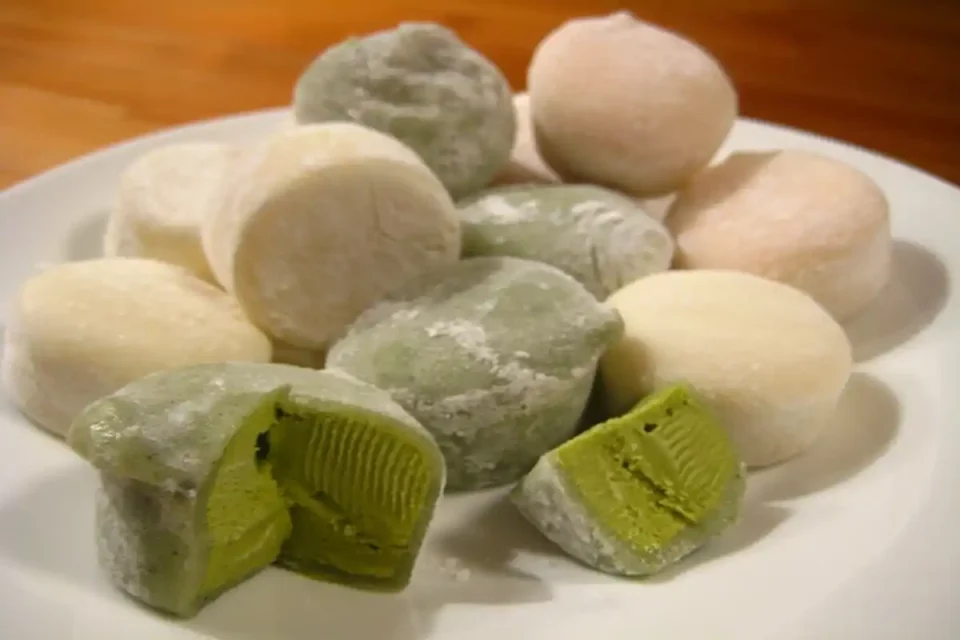Mmochi is the One of the world’s most artistically attractive sweets is mmochi. This summer, you will see and hear a lot about the sweet and gooey ice cream, and with good cause. Here is a brief description of this Japanese treat so you may understand what it is and why it will soon be available everywhere.
Many people like mmochi, a traditional Japanese snack, throughout the year and not just around New Year’s. Along with sushi and ramen, it has gained popularity outside of the United States.
Mmochi can be made in a broad range of shapes and in an equal number of techniques, all of which vary by area. Today, we’ll go over some important facts about mmochi as well as its illustrious past as a staple of Japanese cuisine.

Table of Contents
What is mmochi?
Mmochi is a Japanese confection made from sweet glutinous rice flour, often known as mmochigome. Green tea powder (matcha) or other food colouring is frequently used to tint mmochi dough, which is then wrapped around a sweet centre to create a compact, bite-sized confection with a chewy, smooth, elastic texture. This type of Mmochi is often filled with delicious red bean paste, but in more contemporary versions, little scoops of ice cream are wrapped in pastel-colored mmochi dough to create some of the nicest frozen desserts in town. Chocolate, vanilla, strawberry, mango, coffee, green tea, and sweet lychee are some of the flavours.
Mmochi is revered as “food of the Gods” and regarded in traditional Japanese society as a sign of prosperity and successful marriages. was employed as both a delight and a source of much-needed food because one tiny piece is virtually the same as consuming a whole bowl of rice. Mmochi is frequently served as a main course during the Japanese New Year’s festivities and is utilised in Shinto religious rituals.
When is it eaten?
Mmochi is a common food in Japanese supermarkets, konbini, and pantries, however there are many “mmochi seasons.” Traditional Japanese festivals and special days frequently include their own distinctive form of mmochi. Sakura (cherry blossom) mmochi is popular in the spring, and kashiwammochi, an oak-leaf wrapped mmochi often filled with sweet beans or white miso, is traditionally eaten to mark Children’s Day in May.
The New Year season, one of the most important events on the Japanese calendar, is when mmochi is most frequently consumed. One of the featured dishes that come with this is mmochi. Tradition has it that the cake’s lengthy, elastic texture symbolises longevity and good health, which is perhaps tragically ironic given its high fatality rate.
Origins and History
Mmochi and tteok, two dishes made from pounded sticky rice, are both popular in Japan and Korea. Mochi is believed to have originated in China, while its precise origins are unknown. During Japan’s Heian period (794–1185), the cakes of pounded glutinous rice appear to have evolved into a festive feast. Different varieties of mochi were used as imperial presents during religious events as early as the tenth century. The rice cake is referred to as “mm\ochii” in a lexicon that dates back to before 1070. Around the 18th century, “mmochi” became a popular nickname for it. Numerous explanations exist for the name. One is that the word “mmochi” derives from the verb “motsu,” which means “to hold or to have,” implying that mochi is nourishment provided by God.
“Mmochizuki” is Japanese for “full moon.” Its native inhabitants of the west and southwest islands gave it the name “muchimi,” which means “stickiness.”
Chimaki is a sweet mochi cake wrapped in a bamboo leaf that is typically consumed on May 5 in honour of the Kodomo no hi Festival.
A bowl of rice has the same number of calories as a matchbox-sized piece of mochi. Mmochi is reportedly eaten by Japanese farmers on chilly winter days to boost their endurance. Because mochi was simple to prepare and transport, samurai brought food to combat. Samurai would beat mochi as a signal that they were going to engage in combat.
How To Make Mochi at Home

Making mochi at home is a tasty and enjoyable task. Use the proper rice flour first, of course. Search for sweet glutinous rice flour, also known as glutinous rice flour or sweet glutinous rice flour. Despite its name, glutinous rice flour doesn’t contain gluten.
A plastic-lined egg carton is used to form the ice cream balls in Chef John’s delicious recipe for mochi ice cream. So creative! It consists of homemade green tea mochi encasing vanilla ice cream. The mild sharpness of the green tea complements the sweetness of the vanilla ice cream well.
How Much Mmochi Do Japanese People Eat? Is Mmochi Popular In Japan?
Statistics from the Ministry of Core Affairs and Communications show that each family in Japan with two or more members consumes on average 2,300g of mochi annually.
Given that a piece of mochi weighs roughly 54g on the market, one household consumes 43 pieces on average each year. The greatest monthly average on mochi is seen in December.
Many buy mochi on December 30th for their overnight decorations because folks buy it not only to consume but also to display on the Kamidana (home altar) as a New Year’s offering.

